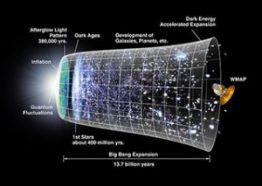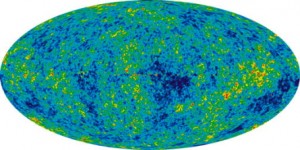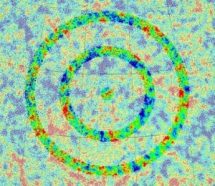When the universe began … again
Physicists suggest maybe the Big Bang was the latest of many bangs

How old is the universe? Ask a cosmologist, and you’ll probably learn that the universe was born with the Big Bang about 13.7 billion years ago. (Cosmologists study the age of the universe.) At the time of the Big Bang, the universe, then smaller than an atom, started to get big — very quickly. It’s been growing ever since.
But if you ask Roger Penrose and Vahe Gurzadyan, you’ll get a much different — and wilder — answer. They’ll agree that the Big Bang probably happened 13.7 billion years ago, but they might argue that it was not the beginning. In a new, online paper by Penrose and Gurzadyan, the scientists suggest that the Big Bang was only the latest in a series of many “bangs.” The universe, in other words, has had many births — and many deaths.
If they’re right, the Big Bang is actually just the latest “bang,” and the universe has expanded and contracted multiple times.
Here’s a way to understand their theory. Imagine that the universe started out as a lump of uncooked bread dough. Just as bread dough grows with time (if you let it rise), the universe has been expanding ever since the Big Bang.
If the universe is bread dough in the model of Penrose and Gurzadyan, the dough doesn’t act like anything you’ve ever kneaded. Instead, this dough rises, and then falls. And then rises again. Then falls again.

Penrose is a theoretical physicist at the University of Oxford in England. Gurzadyan is a physicist at the Yerevan Physics Institute and Yerevan State University in Armenia.
Penrose is famous for his accomplishments in physics and mathematics, including research on how black holes emerge from the deaths of stars. His best-selling books explain complicated science topics to ordinary readers. He is also famous, however, for saying that popular ideas in physics are just plain wrong.
Penrose and Gurzadyan claim that the evidence for their idea lies in a map of the early universe. This isn’t any ordinary map. It doesn’t show only constellations or galaxies. Instead, it shows the oldest light in the universe, left over from the Big Bang. This light isn’t visible. It’s microwave radiation, and it is like a fading glimpse of the first moment in time.
After studying the data, the physicists say they’ve found strange patterns in the map. In some places, the microwave radiation looks a little different from the rest of the picture. In the map, these regions look like circles within circles — they’re places where the radiation temperatures are unlike those in other parts of the universe, but in a weird way.
In general, the background radiation looks like a mess — there are many different spots of different temperatures right next to each other. But within the circles, the temperature isn’t messed up enough. In other words, some natural force caused these regions to be too tidy.

Penrose and Gurzadyan say these circles can’t be explained by the theory of inflation, which says the universe expanded very rapidly right after the Big Bang.
Their idea for how the circles showed up is wild. In the previous version of the universe, they argue, supermassive black holes might have collided. This giant smash-up would have produced powerful waves that moved away from the collision in concentric circles. These waves are called gravitational waves, and they shake the very fabric of the universe.
Penrose and Gurzadyan say that when the previous universe ended and ours began, those gravitational waves turned into energy. That extra energy burst created the tidy concentric circles that the physicists found.
In other words, those concentric circles are like echoes of black holes that smashed together — in a previous universe.
It’s a wild idea, and not all physicists are ready to get behind Penrose and Gurzadyan. After all, their work seems to cast doubt on inflation, one of the most important ideas in modern cosmology. To convince their colleagues, Penrose and Gurzadyan still have a lot of work to do.
“The paper does not provide enough detail about the analysis to assess the reality of these circles,” David Spergel told Science News. Spergel is a cosmologist at Princeton University.
POWER WORDS (adapted from NASA and the Yahoo! Kids Dictionary)
Big Bang The cosmic expansion that marked the origin of the universe, according to current theory.
cosmology The study of the history, structure and movements of the universe.
inflation theory A theory that proposes a period of extremely rapid expansion of the universe during its first few moments.
cosmic microwave radiation background The heat left over from the Big Bang and that should exist throughout the universe. It is estimated to be about 2.725 degrees above absolute zero.







